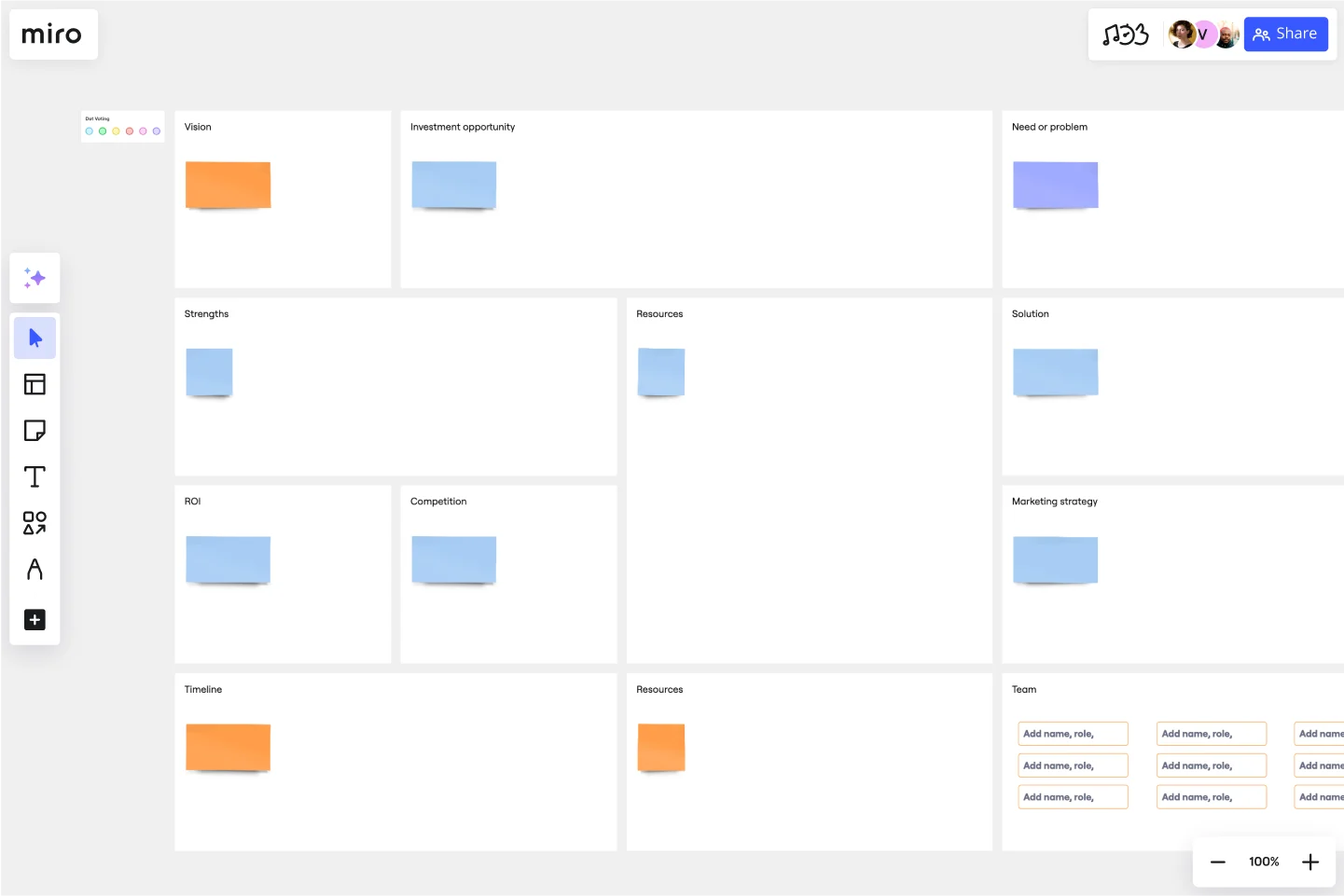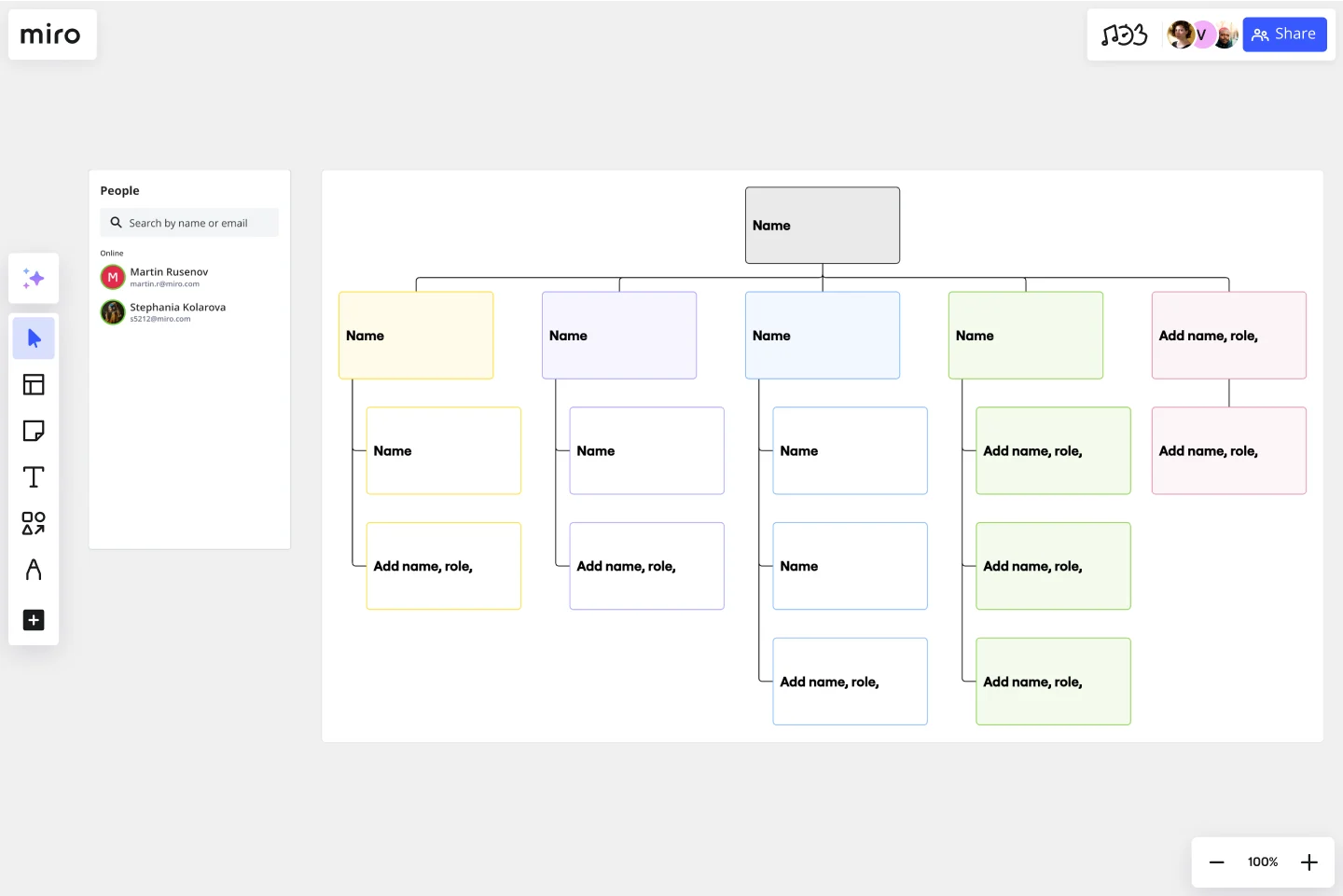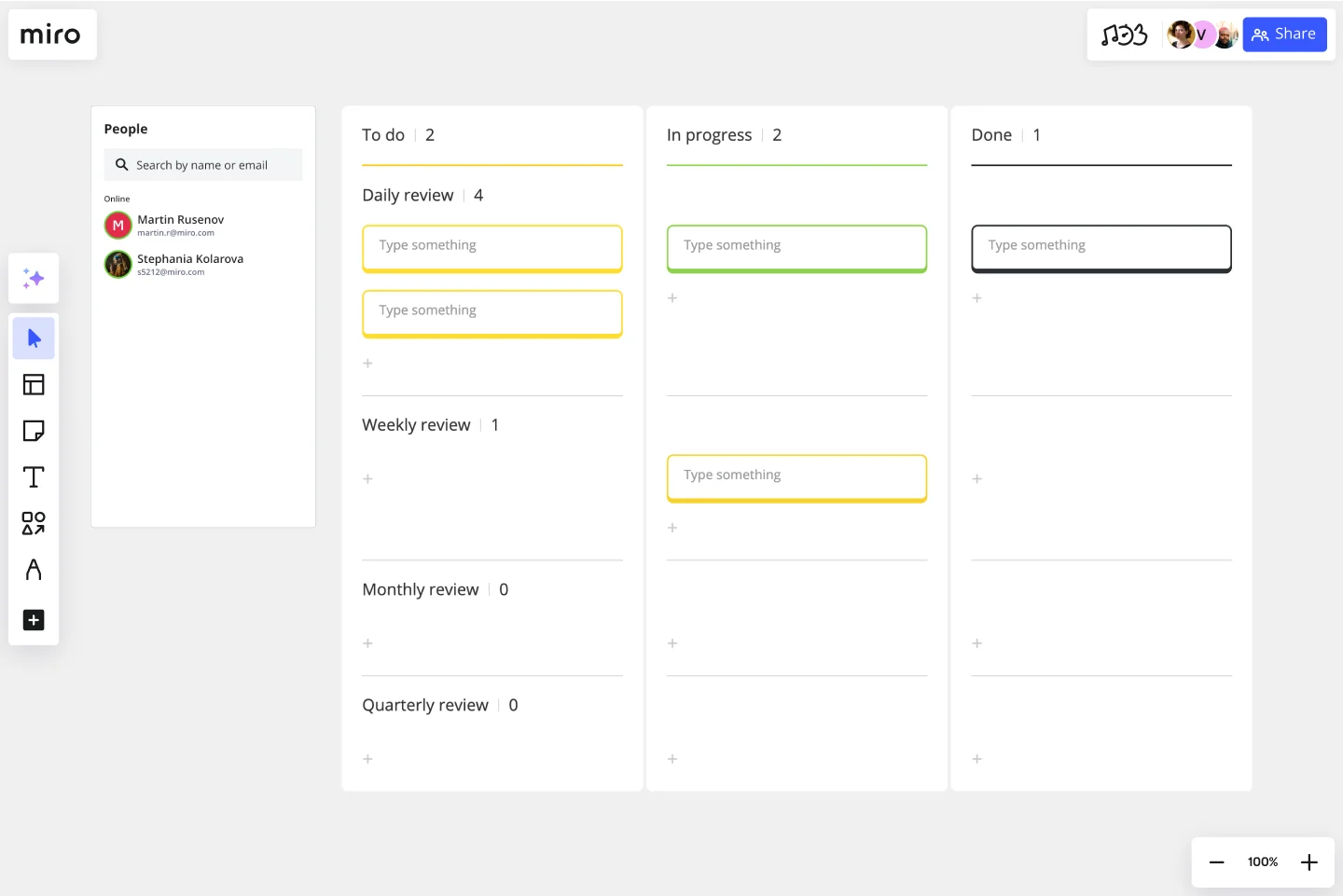
Table of contents
Table of contents
How to make a business plan

How to make a good business plan: step-by-step guide
A business plan is a strategic roadmap used to navigate the challenging journey of entrepreneurship. It's the foundation upon which you build a successful business.
A well-crafted business plan can help you define your vision, clarify your goals, and identify potential problems before they arise.
But where do you start? How do you create a business plan that sets you up for success?
This article will explore the step-by-step process of creating a comprehensive business plan.
What is a business plan?
A business plan is a formal document that outlines a business's objectives, strategies, and operational procedures. It typically includes the following information about a company:
Products or services
Target market
Competitors
Marketing and sales strategies
Financial plan
Management team
A business plan serves as a roadmap for a company's success and provides a blueprint for its growth and development. It helps entrepreneurs and business owners organize their ideas, evaluate the feasibility, and identify potential challenges and opportunities.
As well as serving as a guide for business owners, a business plan can attract investors and secure funding. It demonstrates the company's understanding of the market, its ability to generate revenue and profits, and its strategy for managing risks and achieving success.
Business plan vs. business model canvas
A business plan may seem similar to a business model canvas, but each document serves a different purpose.
A business model canvas is a high-level overview that helps entrepreneurs and business owners quickly test and iterate their ideas. It is often a one-page document that briefly outlines the following:
Key partnerships
Key activities
Key propositions
Customer relationships
Customer segments
Channels
Key resources
Cost structure
Revenue streams
On the other hand, a Business Plan Template provides a more in-depth analysis of a company's strategy and operations. It is typically a lengthy document and requires significant time and effort to develop.
A business model shouldn’t replace a business plan, and vice versa. Business owners should lay the foundations and visually capture the most important information with a Business Model Canvas Template. Because this is a fast and efficient way to communicate a business idea, a business model canvas is a good starting point before developing a more comprehensive business plan.
A business plan can aim to secure funding from investors or lenders, while a business model canvas communicates a business idea to potential customers or partners.
Why is a business plan important?
A business plan is crucial for any entrepreneur or business owner wanting to increase their chances of success.
Here are some of the many benefits of having a thorough business plan.
Helps to define the business goals and objectives
A business plan encourages you to think critically about your goals and objectives. Doing so lets you clearly understand what you want to achieve and how you plan to get there.
A well-defined set of goals, objectives, and key results also provides a sense of direction and purpose, which helps keep business owners focused and motivated. Explore Miro's OKR templates to streamline your goal-setting process, track progress, and ensure alignment across your team.
Guides decision-making
A business plan requires you to consider different scenarios and potential problems that may arise in your business. This awareness allows you to devise strategies to deal with these issues and avoid pitfalls.
With a clear plan, entrepreneurs can make informed decisions aligning with their overall business goals and objectives. This helps reduce the risk of making costly mistakes and ensures they make decisions with long-term success in mind.
Attracts investors and secures funding
Investors and lenders often require a business plan before considering investing in your business. A document that outlines the company's goals, objectives, and financial forecasts can help instill confidence in potential investors and lenders.
A well-written business plan demonstrates that you have thoroughly thought through your business idea and have a solid plan for success.
Identifies potential challenges and risks
A business plan requires entrepreneurs to consider potential challenges and risks that could impact their business. For example:
Is there enough demand for my product or service?
Will I have enough capital to start my business?
Is the market oversaturated with too many competitors?
What will happen if my marketing strategy is ineffective?
By identifying these potential challenges, entrepreneurs can develop strategies to mitigate risks and overcome challenges. This can reduce the likelihood of costly mistakes and ensure the business is well-positioned to take on any challenges.
Provides a basis for measuring success
A business plan serves as a framework for measuring success by providing clear goals and financial projections. Entrepreneurs can regularly refer to the original business plan as a benchmark to measure progress. By comparing the current business position to initial forecasts, business owners can answer questions such as:
Are we where we want to be at this point?
Did we achieve our goals?
If not, why not, and what do we need to do?
After assessing whether the business is meeting its objectives or falling short, business owners can adjust their strategies as needed.
How to make a business plan step by step
The steps below will guide you through the process of creating a business plan and what key components you need to include.
1. Create an executive summary
Start with a brief overview of your entire plan. The executive summary should cover your business plan's main points and key takeaways.

Keep your executive summary concise and clear with the Executive Summary Template. The simple design helps readers understand the crux of your business plan without reading the entire document.
2. Write your company description
Provide a detailed explanation of your company. Include information on what your company does, the mission statement, and your vision for the future.
Provide additional background information on the history of your company, the founders, and any notable achievements or milestones.
3. Conduct a market analysis
Conduct an in-depth analysis of your industry, competitors, and target market. This is best done with a SWOT analysis to identify your strengths, weaknesses, opportunities, and threats. Next, identify your target market's needs, demographics, and behaviors.

Use the Competitive Analysis Template to brainstorm answers to simple questions like:
What does the current market look like?
Who are your competitors?
What are they offering?
What will give you a competitive advantage?
Who is your target market?
What are they looking for and why?
How will your product or service satisfy a need?
These questions should give you valuable insights into the current market and where your business stands.
4. Describe your products and services
Provide detailed information about your products and services. This includes pricing information, product features, and any unique selling points.

Use the Product/Market Fit Template to explain how your products meet the needs of your target market. Describe what sets them apart from the competition.
5. Design a marketing and sales strategy
Outline how you plan to promote and sell your products. Your marketing strategy and sales strategy should include information about your:
Target market
Pricing strategy
Advertising and promotional tactics
Sales channels

The Go to Market Strategy Template is a great way to visually map how you plan to launch your product or service in a new or existing market.
6. Determine budget and financial projections
Document detailed information on your business’ finances. Describe the current financial position of the company and how you expect the finances to play out.
Some details to include in this section are:
Startup costs
Revenue projections
Profit and loss statement
Funding you have received or plan to receive
Strategy for raising funds
7. Set the organization and management structure

Define how your company is structured and who will be responsible for each aspect of the business. Use the Business Organizational Chart Template to visually map the company’s teams, roles, and hierarchy.
As well as the organization and management structure, discuss the legal structure of your business. Clarify whether your business is a corporation, partnership, sole proprietorship, or LLC.
8. Make an action plan

At this point in your business plan, you’ve described what you’re aiming for. But how are you going to get there? The Action Plan Template describes the following steps to move your business plan forward. Outline the next steps you plan to take to bring your business plan to fruition.
Types of business plans
Several types of business plans cater to different purposes and stages of a company's lifecycle. Here are some of the most common types of business plans.
Startup business plan
A startup business plan is typically an entrepreneur's first business plan. This document helps entrepreneurs articulate their business idea when starting a new business.
Not sure how to make a business plan for a startup? It’s pretty similar to a regular business plan, except the primary purpose of a startup business plan is to convince investors to provide funding for the business. A startup business plan also outlines the potential target market, product/service offering, marketing plan, and financial projections.
Strategic business plan
A strategic business plan is a long-term plan that outlines a company's overall strategy, objectives, and tactics. This type of strategic plan focuses on the big picture and helps business owners set goals and priorities and measure progress.
The primary purpose of a strategic business plan is to provide direction and guidance to the company's management team and stakeholders. The plan typically covers a period of three to five years.
Operational business plan
An operational business plan is a detailed document that outlines the day-to-day operations of a business. It focuses on the specific activities and processes required to run the business, such as:
Organizational structure
Staffing plan
Production plan
Quality control
Inventory management
Supply chain
The primary purpose of an operational business plan is to ensure that the business runs efficiently and effectively. It helps business owners manage their resources, track their performance, and identify areas for improvement.
Growth-business plan
A growth-business plan is a strategic plan that outlines how a company plans to expand its business. It helps business owners identify new market opportunities and increase revenue and profitability. The primary purpose of a growth-business plan is to provide a roadmap for the company's expansion and growth.
The 3 Horizons of Growth Template is a great tool to identify new areas of growth. This framework categorizes growth opportunities into three categories: Horizon 1 (core business), Horizon 2 (emerging business), and Horizon 3 (potential business).
One-page business plan
A one-page business plan is a condensed version of a full business plan that focuses on the most critical aspects of a business. It’s a great tool for entrepreneurs who want to quickly communicate their business idea to potential investors, partners, or employees.
A one-page business plan typically includes sections such as business concept, value proposition, revenue streams, and cost structure.
Best practices for how to make a good business plan
Here are some additional tips for creating a business plan:
Use a template
A template can help you organize your thoughts and effectively communicate your business ideas and strategies. Starting with a template can also save you time and effort when formatting your plan.
Miro’s extensive library of customizable templates includes all the necessary sections for a comprehensive business plan. With our templates, you can confidently present your business plans to stakeholders and investors.
Be practical
Avoid overestimating revenue projections or underestimating expenses. Your business plan should be grounded in practical realities like your budget, resources, and capabilities.
Be specific
Provide as much detail as possible in your business plan. A specific plan is easier to execute because it provides clear guidance on what needs to be done and how. Without specific details, your plan may be too broad or vague, making it difficult to know where to start or how to measure success.
Be thorough with your research
Conduct thorough research to fully understand the market, your competitors, and your target audience. By conducting thorough research, you can identify potential risks and challenges your business may face and develop strategies to mitigate them.
Get input from others
It can be easy to become overly focused on your vision and ideas, leading to tunnel vision and a lack of objectivity. By seeking input from others, you can identify potential opportunities you may have overlooked.
Review and revise regularly
A business plan is a living document. You should update it regularly to reflect market, industry, and business changes. Set aside time for regular reviews and revisions to ensure your plan remains relevant and effective.
Create a winning business plan to chart your path to success
Starting or growing a business can be challenging, but it doesn't have to be. Whether you're a seasoned entrepreneur or just starting, a well-written business plan can make or break your business’ success.
The purpose of a business plan is more than just to secure funding and attract investors. It also serves as a roadmap for achieving your business goals and realizing your vision. With the right mindset, tools, and strategies, you can develop a visually appealing, persuasive business plan.
Ready to make an effective business plan that works for you? Check out our library of ready-made strategy and planning templates and chart your path to success.